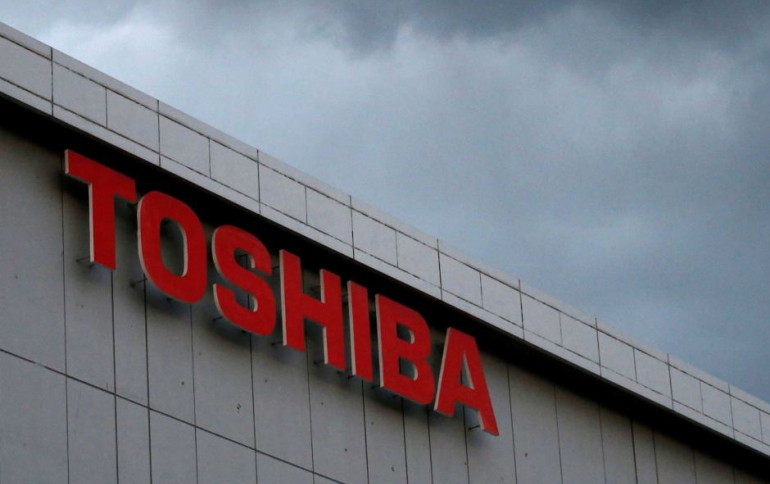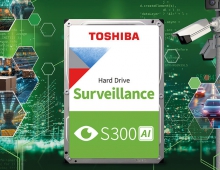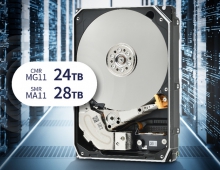
Toshiba Formalizes Chips Sale to Bain Consortium, WD Steps up Legal Action
Toshiba's Board of Directors has decided on the sale of all shares of Toshiba Memory Corporation (TMC), a wholly owned subsidiary of Toshiba, to K.K. Pangea, a special purpose acquisition company formed by a Bain Capital Private Equity and an affifialted consortium, even as jilted suitor and joint venture partner Western Digital took fresh legal action.
With the aim of ensuring a stable business transfer, Toshiba will
invest 350.5 billion yen in Pangea, and Toshiba will also be entitled to related financial benefits, such as dividends.
Prior to the transfer of TMC's stock to Pangea, Bain Capital, Japanese and non-Japanese companies, and Toshiba intend to make
investments into Pangea, acquiring Pangea's common stock, convertible preferred stock and non-convertible preferred stock. In addition to this, Pangea intends to secure loans from financial institutions and banks.
The total purchase price for the share transfer is planned to be 2 trillion yen ($18 billion).
Toshiba, struggling to plug a yawning balance sheet hole, has been trying to sell its chip business since late January.
However, question marks remain - not least around antitrust approvals and the legal battle with Western Digital.
Bain has partnered with South Korea's SK Hynix and brought in U.S. buyers of Toshiba chips such as Apple and Dell to bolster its bid.
SK Hynix said in a statement that it was committed to ironing out the remaining issues in the contract.
Western Digital has sought to prevent the sale of the interests of the Joint Ventures to any third party, and the two parties are currently engaged in litigation and arbitration. Western Digital has sought an injunction preventing the transfer of the Joint Venture interests in the US courts and has also initiated arbitration against Toshiba before the International Chamber of Commerce's International Court of Arbitration (May 14, 2017, July 5, 2017, September 2017).
On Aug. 3, 2017, Toshiba announced that it would invest in manufacturing equipment for the Fab 6 clean room at the JV operations in Yokkaichi, Japan. The arbitration demand seeks, among other things, a permanent injunction preventing Toshiba from making unilateral investments in manufacturing equipment for Fab 6 without first giving SanDisk the opportunity to make a comparable investment in expansions and conversions of JV capacity for BiCS 3D NAND flash memory.
It is unclear how long the process could last, and what impact it would have on the completion of the sale.
Toshiba and Western Digital have jointly invested in the Yokkaichi Operations. In terms of the ownership of the joint venture, Toshiba has around 55% of the share of the total investment versus Western Digital's 45%. How Toshiba and Western Digital resolve their issues and share the production capacity of the new Fab 6 will be crucial to the completion of the deal and TMC's future development.
Focus on Catching Up to Samsung in 3D-NAND Production
Toshiba's deal, when finalized, could start to have a notable impact on the NAND Flash market in the first half of 2018. This deal will inject the necessary capital into TMC so that it can work to become a rival to Samsung in terms of NAND Flash technology and production capacity.
Several members of the acquiring party are government-backed investors and major private investment firms that are not deeply involved in the NAND Flash industry. This shows that TMC's technologies have high strategic value.
Given that the total investment in a new NAND Flash fab (with a monthly capacity of 80,000~100,000 wafers) averages around US$8 billion, neither Toshiba nor Western Digital can alone shoulder the cost of capacity expansions and technology development, especially as they are facing against the industry leader Samsung.
Just 10~15% of the total monthly NAND Flash capacity of the Toshiba-Western Digital alliance was based on the 3D-NAND process in the second quarter of 2017. During the same period, 3D-NAND comprised more than 40% of Samsung's total monthly NAND Flash capacity, according to DRAMeXchange.
Micron and Intel are strategic partners in the NAND Flash market, and they also began mass producing 3D-NAND Flash in the second half of 2016. The representation of 3D-NAND in the total monthly NAND Flash capacity of the Intel-Micron camp is projected to exceed 40% in the third quarter of 2017. Toshiba's financial problem has been a major reason as to why the Toshiba-Western Digital alliance are behind their competitors in planning 3D-NAND capacity.
In terms of progress, the Toshiba-Western Digital alliance made the 48-layer stacking technology its mainstream 3D-NAND manufacturing process during the first half of 2017. By this fourth quarter, 3D-NAND is expected to represent around 30% of the alliance's total monthly NAND Flash capacity. With regard to capacity planning, the construction of TMC's Fab 6 in Yokkaichi, Japan, began this March. This facility is scheduled to mass produce the latest 3D-NAND products in 2019.
As the bidding for the majority stake in TMC lasted longer than anticipated, the effect of this deal will become apparent later in the first half of 2018. "After the sale, TMC may be able to raise its 3D-NAND Flash capacity and yield rate to a level higher than initially expected," said Alan Chen, senior research manager of DRAMeXchange. "Plus, there is a significant degree of uncertainty in NAND Flash demand for the first half of 2018. Hence, the deal in the short term may actually cause supply-driven price decline in the NAND Flash market during the first half of 2018."





















